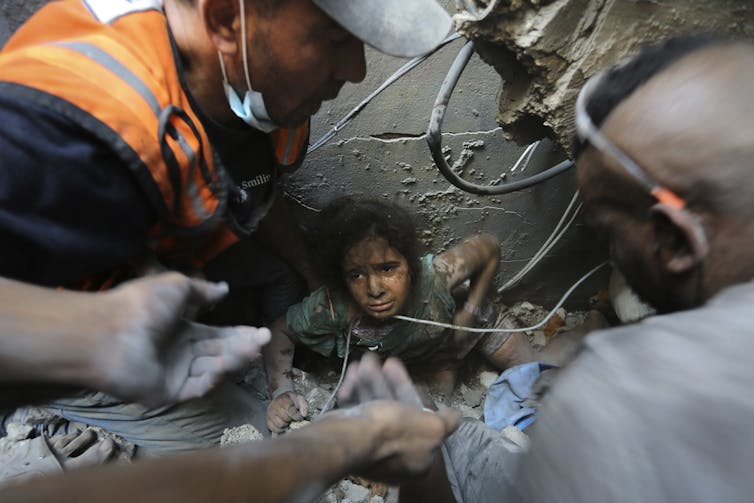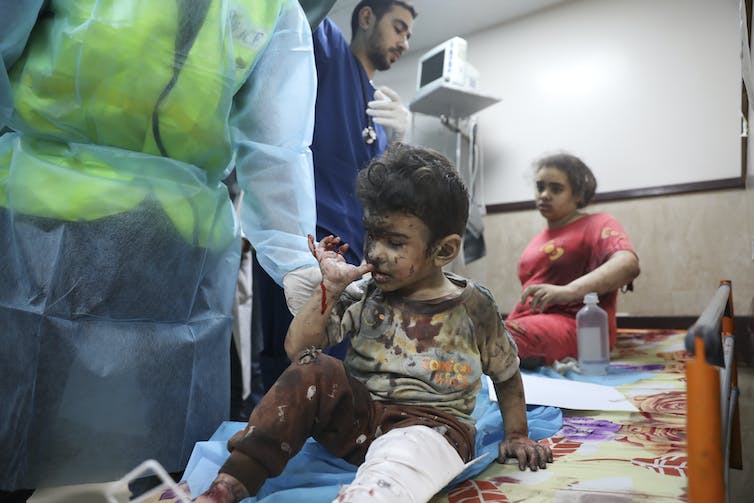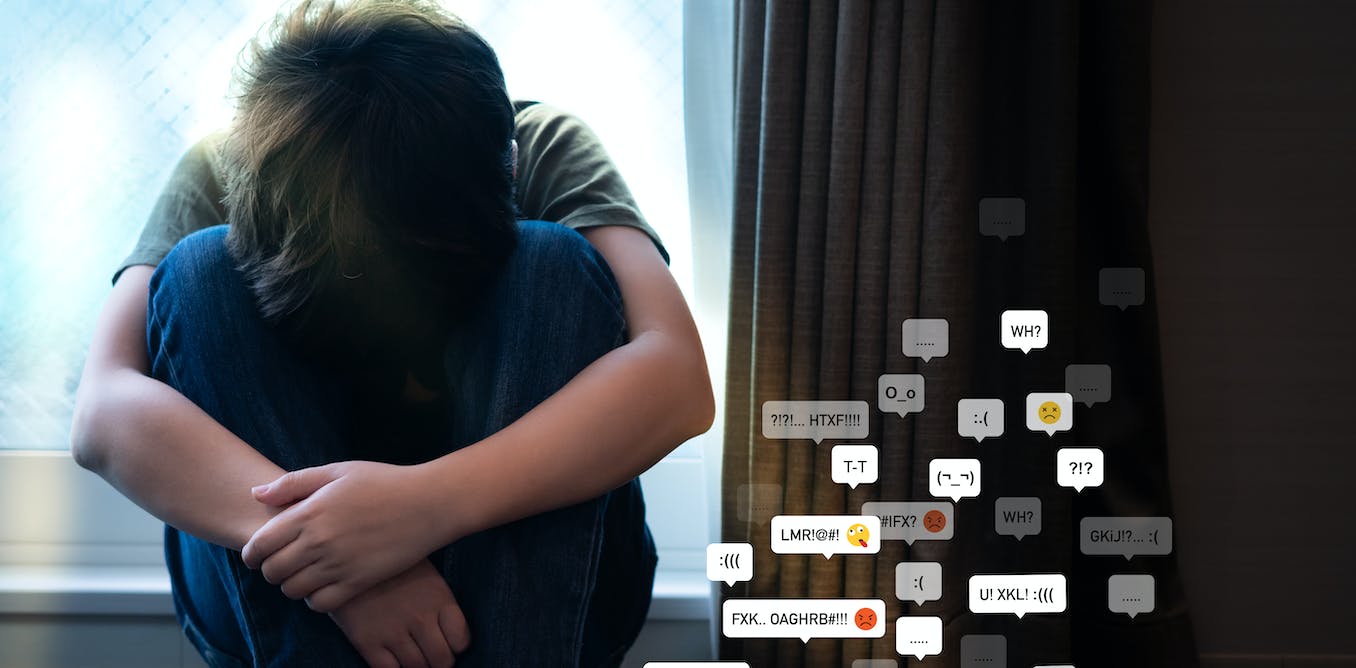Too often, it’s the most vulnerable who suffer most in the throes of war.
This remains true, with children accounting for many of the deaths and casualties in the war between Israel and Hamas.
Just this week there have been two bombings of the Jabalia Refugee Camp, a densely populated area of the Gaza strip home to many families with children.
International agencies are particularly worried. The United Nations International Children’s Emergency Fund has said Gaza is turning into a “graveyard of children”.
The disproportionate effect on young people is not just resulting in devastating scenes right now. It will have long-term consequences.
A large toll on a young population
The median age of people in Gaza is just 18 years. Some 65% of the population is under 24.
To date, more than 41% of the 8,805 people killed in Gaza as of October 31 2023 are children, according to the UN.
Many people are missing, trapped under the rubble of destroyed homes. More than half of those missing are children.
Children account for more than 30% of those injured in Gaza, possibly indicating the low level of survival among children caught in the conflict.
These statistics echo previous research showing the disproportionate consequences on children in armed conflict.
But the violence against children has not been limited to Gaza.
Graphic accounts point to the killing of numerous Israeli children in the Hamas attacks on October 7.
Scores of young people were killed at a music festival.
Ali Mohmoud/AP
At least 33 of the estimated 240 Israeli hostages taken by Hamas are thought to be children, including babies and infants.
In the West Bank, at least 122 Palestinians have been killed in Israeli military operations since October 7, 39 of them children. It’s unclear how many of those casualties are directly because of the conflict.
It’s an extraordinarily grim stocktake, but key to understanding the nature of the conflict.
In the Israel-Hamas war, children are the ultimate pawns – and ultimate victims
Dire situation made worse
Sadly, the suffering of children in Gaza is not new.
For decades, children in Gaza have been among the world’s most vulnerable groups, with very high rates of paediatric mental health problems, stunted growth, lead poisoning, malnutrition and post-traumatic stress disorder.
An Israeli study showed high rates of psychopathology among those exposed to trauma from military attacks.
Other research that compared the wellbeing of Israeli and Palestinian children found the latter fared significantly worse.
These conditions have worsened since Hamas took power in Gaza in 2006.
Protecting children stuck in adult wars
There are claims from both sides of breaches of international humanitarian law and violations of the Laws of War.
Regardless of these allegations, there has been a fundamental breach of the UN’s Convention on the Rights of the Child by all parties.
The convention is made up of 54 articles that aim to protect and secure children’s wellbeing, including during armed conflict.
There are specific requirements of states to protect the lives of children from violence, abuse and neglect at both civil and political levels.

Abed Khaled/AP
Other laws also exist to protect children.
International humanitarian law is unequivocal in combatants’ legal responsibility to protect children in all situations of armed conflict.
The Geneva Conventions and the Additional Protocols cover children in the same way they cover civilians during war.
But there is extra protection for those under 18, with children considered an “object of special respect”.
This extends to children who are actively participating in the conflict.
Israel and Palestine are signatories to the UN Convention on the Rights of the Child and the Geneva Convention.
That said, an International Criminal Court investigation into ongoing conflict in the region was reopened in 2021.
The UN is also investigating allegations of war crimes on all sides from October 7 2023.
It’s part of a years-long probe that was originally opened in 2021 to investigate “all alleged violations of international humanitarian law and all alleged violations and abuses of international human rights law” in Palestine, the West Bank and Israel.
Israel-Hamas war: will the murder of peace activists mean the end of the peace movement?
Dimmed hopes for the future
Despite all the legal protections, it’s clear children are suffering.
The legal provision for special respect of children in war isn’t being adequately considered. It requires all sides to consider carefully the world they will leave behind.
But if we look to the future of the region, the outlook appears bleak.
Children have great potential to build peace.
Evidence of Palestinian children developing safety, hope and resilience is promising.
Peace work by Israeli and Palestinian children provides insight for what is referred to as Neve Shalom/Wahat Al-Salam (the Hebrew and Arabic words for Oasis of Peace).
But the surviving children of this conflict will likely emerge traumatised. They will have spent their childhoods surrounded by the extreme rhetoric of war, hate and retribution.
It’s hard to see, then, how our future leaders could overcome the odds to fight for peace and unity in the region.
Generations of adults on all sides have let these children down. They need protecting for their own sake, and for the futures of the places they call home.
Australian MPs walk a difficult line on Israel-Hamas conflict




